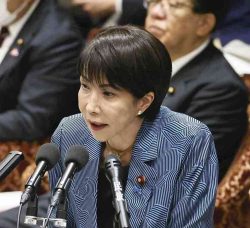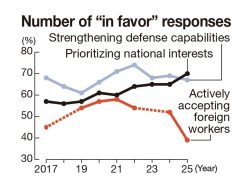13:09 JST, December 2, 2020
With the decrease in the population of 18-year-olds, the severity of the management environment for universities is increasing. It is necessary to make efforts to enhance management efficiency and improve the quality of education through mergers and strengthening cooperation.
Keio University and Tokyo Dental College announced that they have started discussions to merge their educational corporations and to integrate the dental faculty into the university with an April 2023 target date. If realized, Keio University will have four medical-related faculties: medicine, dentistry, pharmacy and nursing and medical care.
The number of 18-year-olds exceeded 2 million in the early 1990s, but has already fallen below 1.2 million and is expected to decrease further in the future. The merger plan apparently is aimed at enhancing the schools’ brand power and strengthening management foundations.
The move could also affect other universities and could accelerate their reorganization.
This is a strategic merger between universities that are popular among students and have stable management. Synergistic effects on research are also expected.
The problem is the future of universities that are suffering from financial difficulties. Private universities with enrollment below their intake quota account for 30% of all such universities, while 70% of junior colleges are in the same situation. In particular, small and midsize schools in regional areas are reportedly experiencing serious financial difficulties. There are more than 1,000 universities and junior colleges nationwide, but it can be said to be difficult to maintain all of them as they are.
Many universities fail to find a solution to the deadlock or lack a sense of urgency. It is hoped that universities will review their financial conditions again and make efforts to improve their management efficiency by exploring ways toward mergers and cooperation with others.
It is important for universities to have clarity in their role through such measures as contributing to local communities by taking advantage of distinctive characteristics. With the help of local governments and companies, they need to make education and research more attractive.
By all means, it is necessary to avoid a situation in which universities and junior colleges go bankrupt while students are still enrolled there. The Education, Culture, Sports, Science and Technology Ministry also needs to take a firm stance in instructing universities with serious financial problems to improve their management.
In order to facilitate reorganization, the education ministry has revised its ordinance so that private universities can smoothly transfer their faculties to others. It is also promoting the introduction of a system in which national, public and private universities in a local area can be grouped and operated in an integrated manner.
Moves for integration among national and public universities have also been active, such as Nagoya University and Gifu University, both national universities, operating under the same educational corporation, and the merging of Osaka Prefectural University and Osaka City University. Private universities should make use of such a system and take advantage of their individuality and strengths.
The role required for universities is changing with the times. With the promotion of globalization and information technology, the number of faculties that transcend the boundaries between liberal arts and sciences is increasing. It is also becoming more important for adults to learn at universities again.
With the outbreak of the novel coronavirus, universities have created an environment for online classes. This will be an opportunity to deepen cooperation with universities other than those nearby. It is obvious that universities with old-fashioned management will not be able to survive. Reform is long overdue.
(From The Yomiuri Shimbun, Dec. 2, 2020)
"Editorial & Columns" POPULAR ARTICLE
-

Corporate Interim Earnings: Companies Must Devise Ways to Overcome Trump Tariffs
-

Violations of Subcontract Law: Major Automakers Must Eliminate Old Practices
-

Local Governments’ Tax Revenues: Devise Ways to Correct Imbalances in Tax Sources
-

Takaichi’s Summit with Economics-Minded Trump Successfully Advanced Japan’s Security Interests
-

Lower House Budget Committee: Unrestrained Fiscal Stimulus Is Unacceptable
JN ACCESS RANKING
-

Govt Plans to Urge Municipalities to Help Residents Cope with Rising Prices
-

Japan Resumes Scallop Exports to China
-

Japan Prime Minister Takaichi Vows to Have Country Exit Deflation, Closely Monitor Economic Indicators
-

Japan to Charge Foreigners More for Residence Permits, Looking to Align with Western Countries
-

JR East Suica’s Penguin to Retire at End of FY2026; Baton to be Passed to New Character



















